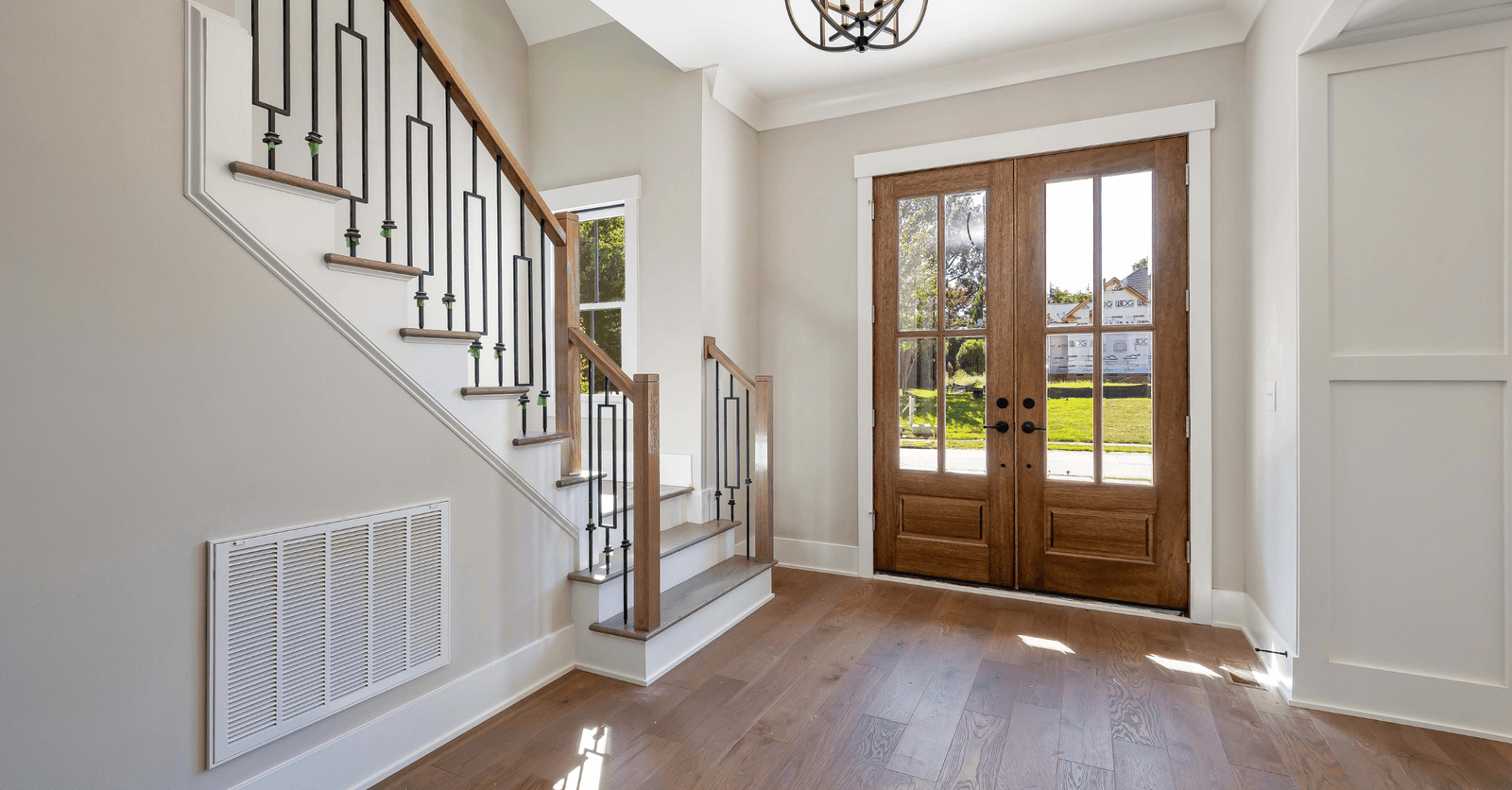Everything to Know About Asbestos Abatement
By Editorial Team
Updated on September 5, 2024

Although asbestos is no longer permitted nor used in home construction or renovations, to this day, it’s still found in many older homes. The harmful effects of asbestos exposure are no longer a secret, which is why asbestos removal is necessary under certain circumstances. But what is asbestos removal and when is it necessary? Keep reading to learn about it all, and much more!
What Is Asbestos?
Asbestos is made of silica fibres that were once very sought-after by the construction industry due to the material’s heightened durability, absorption capacity, and resistance to bacteria, acid, and heat, as well as low resale prices.
As such, it’s found in many material compositions, such as:
Floor tiles
Wood-fired stove and boiler insulation
Joint compound
Roofing
Steam boilers and pipes
Amongst the many adverse effects of asbestos, note that it can lead to lung cancer, mesothelioma, and asbestosis. Specifically, mesothelioma targets the tissue covering the lungs and abdomen (lining of the chest). Symptoms are usually delayed in onset, which makes slowing down the disease’s progression impossible. As for asbestosis, it reduces the lung’s elasticity, rendering it increasingly more difficult to breathe.
Why Have Asbestos Removed from Your House?

Contrary to popular belief, asbestos removal isn’t always required when detected. Indeed, it’s not so much the presence of asbestos that’s problematic, but rather breathing in its fibres. To prevent any situation-related risks, never move or remove hazardous materials yourself. As such, if the material stays in place and it doesn’t crumble over time, you can safely keep it. Note, however, that material deterioration requires you to have it removed completely, replacing it as per new requirements.
How to Dispose of Asbestos-Containing Material (ACM)
Necessary Material and Equipment
The safety measures required will change based on the job’s risk level; below are the recommended measures during asbestos removal:
For low-risk level work:
Wear a reusable half-face respirator with a cartridge and HEPA filter combo or disposable respirator
Dispose of waste in sealed containers
For medium-risk level work:
Wear a respirator with a cartridge and HEPA filter combo (full-face respirator in this case)
Wear disposable protective coveralls, gloves, and plastic booties (all personal protective equipment should be disposable)
Avoid using power tools on friable materials
For high-risk level work:
Wear a powered-air purifying respirator with a HEPA filter
Wear disposal protective clothing
Use two locker rooms (one for everyday clothes and another for work attire) and set up a shower area between the two changing areas
Protect the ventilation system
Opt for on-site monitoring by a consultant
Guidelines
1. Asbestos testing
A qualified asbestos abatement expert must probe the area, taking samples that will later be analyzed in an accredited laboratory. If these specialists discover asbestos concealed in materials around your home, it’ll have to be removed promptly.
2. Asbestos removal
Risk Level | Work |
Low risk (type 1) | - Sawing or cutting an asbestos-containing cement pipe |
Intermediate risk (type 2) | - Running cables above suspended ceiling tiles made with asbestos particles |
High risk (type 3) | - Breaking down asbestos-containing walls and ceilings |
3. Containment enclosure
The next step consists of creating a fixed or dynamic containment enclosure to prevent contamination from spreading through the building itself.
A fixed containment enclosure blocks all access to the building, and then walls and contaminated materials are cleaned and sealed (double-bagged). Then, a test will be done to verify that the area is sealed properly (the room will be inspected following an injection of smoke to spot potential leaks). To prevent a high concentration of airborne asbestos fibres, air intake and exhaust ducts are installed. And, to allow workers to come and go from the contaminated area, an airlock is also installed.
On the other hand, a dynamic containment enclosure is based on enclosure depressurization, which differs from the outdoors. To prevent a leak from escaping the sealed enclosure, which might release asbestos fibres into the work area, airflow is filtered from the outside in. To allow the depressurization system to function optimally, the air is renewed six times an hour. Moreover, air scrubbers are equipped with high-performance filters to trap asbestos fibres.
4. Area decontamination
Moving on with step three, meaning contaminated material removal. As with the previous steps, there are two options. The first option is to disassemble, meaning remove all materials that were exposed to asbestos, to then proceed the same way with asbestos-containing materials.
To limit releasing airborne asbestos particles as much as possible, some contractors opt for wet removal. Before removal, the contaminated material is soaked in water. The surfaces with which the material came into contact are then brushed and vacuumed.
5. Structure verification
Before wrapping up the worksite, the structure’s state has to be assessed by the supervisor and an independent inspection service provider, one who is responsible for validating the assessment carried out beforehand.
6. Dismantling asbestos removal enclosures
Should the inspection carried out reveal no threats, the first containment layer can be removed. After a mandatory 48-hour period, the asbestos-contaminated dust will have settled on the ground, after which a test is carried out to measure the dust rate present in the decontaminated area, which must be below 5 fibres/litre of air. Finally, air extraction devices and barriers are used as the containment enclosures are removed.
7. Waste disposal: category-specific guidelines
Depending on the waste left behind as a result of the work performed, a dedicated disposal procedure has to be followed. Materials are divided into three categories:
Category 1: Filters, polyene films (protective and sealing films)
Category 2: Any substance or item that can’t be decontaminated
Category 3: Any item that can be decontaminated through washing
The materials listed in the first two "hazardous" waste categories are swapped from a first bag that’ll be cleaned before being placed in a second bag (which will also be washed), to finally be placed in a third bag. The latter will allow all contaminated materials to be transported to a dedicated treatment centre for burial or inerting.
The waste listed in the third category will be cleaned in the airlock enclosure that was previously installed and then items will be disposed of as ordinary waste.
To learn more, check out our article on the subject matter.
Legal Obligations and Regulations
The Regulation respecting occupational health and safety makes complying with the measures introduced by the Safety Code for the construction industry mandatory in order to monitor asbestos dust resulting from the removal of contaminated materials.
For any work likely to release asbestos fibres, employers are obliged to provide employee training regarding the appropriate methods to be followed in carrying out asbestos removal work and the risks arising from asbestos fibre inhalation.
Moreover, the CNESST specifies that "all asbestos removal or demolition work done on a construction site requires a certificate vouching that on-site workers were trained properly and a work description detailing methods and procedures to be used will be provided to the CNESST alongside a worksite opening notice." (Quote translated into English by RenoQuotes) However, this obligation doesn’t apply to self-employed contractors.
Any employee involved in an asbestos removal operation must also obtain information relevant to the identification of asbestos-containing materials, as well as equipment and clothing management during said process.
How Much Does Asbestos Removal Cost in Canada?

Photo: Wikimedia Commons
Scope of Work | Cost |
1-storey home, under 3,000 sq. ft. | $4,000–$5,000 |
Removal of 10% of the flooring in a 2-storey house, roughy 1,000 sq. ft. per level | $1,500 |
Removal of 90% of the flooring in a 2-storey house, roughy 1,000 sq. ft. per level | $2,750 |
Complex undertakings or large-scale work | $6,000–$11,000 |
Asbestos sampling and testing | $1,500 |
To learn more, check out our article 2024 Asbestos Removal Cost Guide - How Much to Budget?
When Should Asbestos Be Removed?
Asbestos is safe as long as it's intact and left undisturbed. However, even the slightest exposure can release dangerous airborne fibres, creating a health hazard. If you’re working on a residential renovation project and believe asbestos is present on-site, it’s crucial to halt all work. Don’t attempt to handle or remove asbestos yourself as you could aggravate the situation. It’s highly recommended to hire a qualified, professional asbestos removal company to assess the situation at hand and proceed with safe asbestos removal procedures, if necessary.
Conclusion
In a nutshell, while asbestos is still found in many old homes, it’s essential to know when and how to act to safeguard your health, as well as that of your loved ones. Asbestos removal isn’t always necessary, but as soon as the asbestos is damaged or disturbed, removing it safely is of utmost importance. If you believe that there might be asbestos on a renovation site, don’t take any risks: halt all work immediately and consult with qualified experts. By adhering to the best practices, you can maintain a safe and healthy home environment.
FAQ
How much does mould removal and remediation cost?
Mould removal and remediation costs range from $600 to $30,000, based on the square footage affected and the area to decontaminate.
To learn more, check out our article Go-To Guide for Decontamination and Remediation Processes.
How much does radon home decontamination cost?
Plan on spending roughly $5,000 for a radon decontamination procedure in an already-built home.
To learn more, check out our article Decontamination Project Cost: How Much to Budget in 2024?
When was asbestos banned in houses in Canada?
Asbestos and asbestos-containing materials (ACM) were officially banned from Canadian households in 2018.
Can a single exposure to asbestos be harmful?
Health risks from single or brief asbestos exposure aren't very high. However, note that short-term exposure can be more dangerous and carry higher risks of developing cancers.
Looking for something else?
Related articles
The latest industry news, interviews, technologies, and resources.

Amanda Harvey
•07 Nov 2023
When it comes to home renovation, you might want to break out the hammer and nails as soon as possible. Before you do, it’s important to consider the types of permits you might need for the project.

Editorial Team
•07 Nov 2023
Home elderly care is becoming a growing concern in our society, while many want to live in the comfort and warmth of a family home.

Editorial Team
•16 Jul 2024
Green home renovation materials are slowly growing in popularity, as homeowners are becoming more and more environmentally conscious and looking to reduce their carbon footprint.

Editorial Team
•05 Dec 2023
The dining room is the gathering place of the home and according to the definition associated with these words, must be convivial and accessible. Some use their dining room every day while others reserve it for special occasions. In either case, this room should be adapted to the needs and tastes of the occupants.
